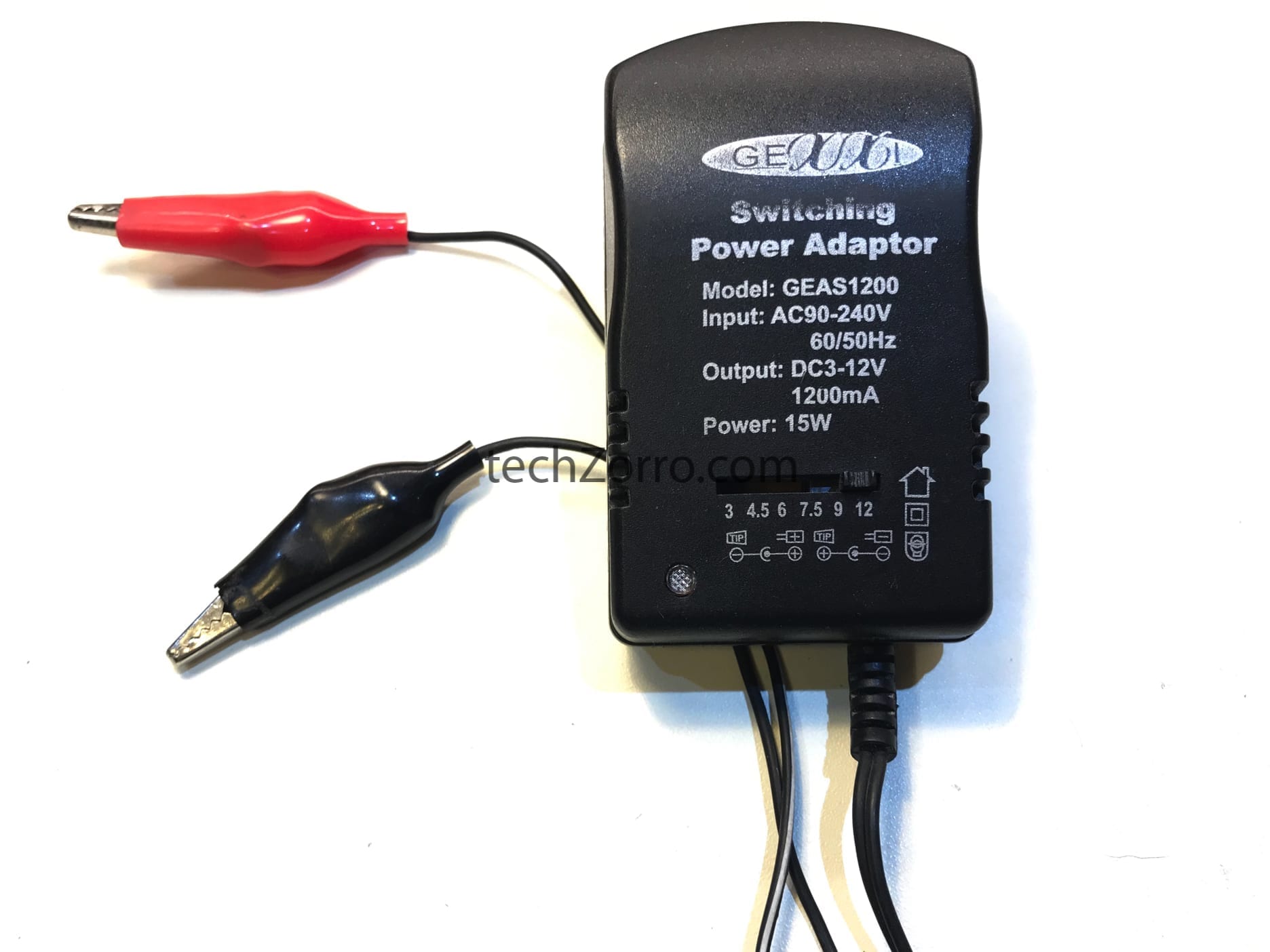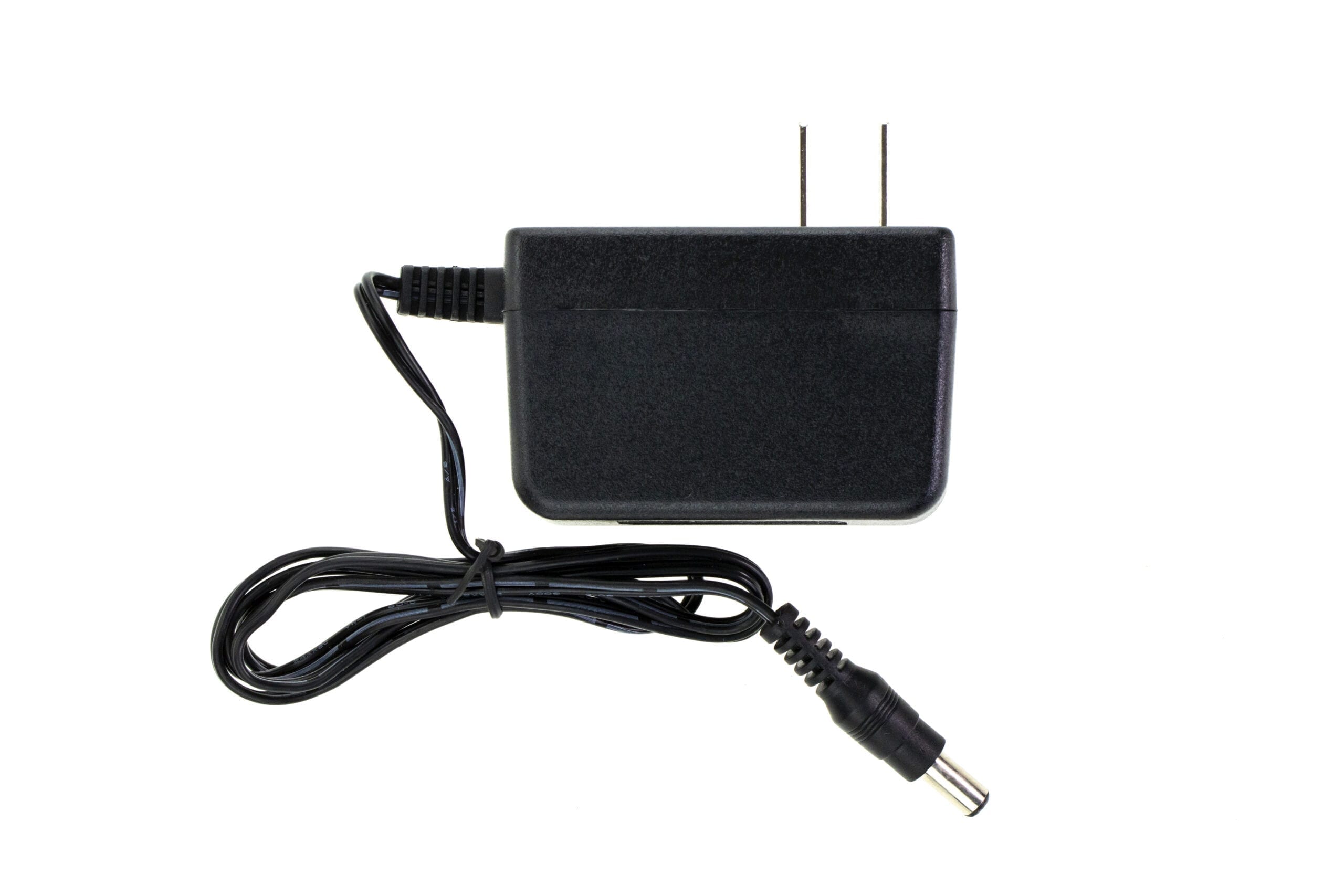The LM2596 modules are common and they come with a potentiometer to regulate the voltage output. I have also used Drok converters which are very convenient in sizes and features, as well as abundant models.
Table of Contents
How to differentiate old AC DC adapters from electronic ones.
To identify an electric AC DC adapter, see the electric specification near the plug. If you spot a narrow “120Vac 60Hz” or “240Vac 50Hz” in the input, for example, then it is likely to be electric one.
On the contrary, electronic AC DC adapters have wider voltage input, such as “100-240Vac 50-60Hz”. These are called “switching power supplies“.
However, some AC DC adapters may have voltage regulators (such as a 7812) and it will still be labeled as a narrow voltage. In this case, such electronic power supplies will give a good and reliable DC output.
Examples of old AC DC adapters reused
Now I’m going to show you a few examples where I have used and recycled old AC DC adapters for powering electronic devices.
Soldering the old AC DC adapter.
For most cases, you will need to solder with tin and a soldering iron.
Strip about 1 or 2cm of insulation from the cables and solder the corresponding (+) with (+) and (-) with (-) and surround it with isolation tape.
You could however, use masking tape instead. If so, make sure you twist both cables to ensure contact since the connection between the cables are mechanically weak. Although it will work, I don't recommend this joint for most cases.
Power an Arduino.
According to the tech specs from the official website of Arduino, the model UNO can be powered from 7 to 12Vdc in the input voltage jack. The higher the input voltage is (within this range), the inefficiency will be higher; this happens because the heat generated by the power regulator.
I found that I had a power supply laying around from old device that has exactly what I was looking for. This power supply delivers 7Vdc and 1.75A maximum, which will work perfectly with Arduino. How do I know that it will have a reliable 7Vdc voltage source? Because I see the label “100-240Vac” on the AC input, which means it's a switching power supply.

Fortunately, this old AC DC adapter came with the same DC jack that the Arduino input requires. All I needed to do is to connect it directly. As you can see in the image below, I have a functioning Arduino!

Reuse an old laptop charger.
This is another quality power supply with a reliable DC output. Almost everyone are compatible with the standard “100-240Vac 50/60Hz“. Most laptops uses 19Vdc with at least 3A current (60W of power or more!). This is more than enough for 95% of microelectronic projects.
I recommend that you solder a DC DC converter in the output. If you know already in which electronic project you are going to use it, then choose the fixed output. Otherwise, go for a variable output. This means, you can use a potentiometer with a screw driver to choose the desired output voltage that you want.
Another good idea is to solder a DC jack in the output (cables yellow and black), if your project has one.
Reuse a cellphone charger.
Since most modern cellphones and smartphones uses 5Vdc as the standard for charging its battery, it's convenient to use its charger for an Arduino or another microcontrollers. If your last cellphone didn't last more than 1 year, it's not an iPhone and you can use its charger to power an microcontroller on a breadboard, as I am going to show you.
In the following picture, I used a wire cutter and stripper to leave the red (+) and black (–) cable ready for the breadboard. This way, you can screw both cables to the red and black terminals of the breadboard.
You may have the idea to keep the micro-USB plug untouched because of its mechanical robustness. For such cases, you will need a micro-USB to breadboard adapter, like the following:
- Adafruit USB Micro-B Breakout Board [ADA1833]
- MagiDeal 10pcs Female Micro USB to DIP 5-Pin Pinboard 2.54mm Micro USB Type
Use on electronic circuit boards.
I'm going to use one on a DIY PCB “LED Roulette” than I soldered myself years ago. It requires 12Vdc so it should work.

I'm going to use this old AC/DC adapter from a Panasonic telephone. It's labeled as 12Vdc and 100mA . Beware! On the label you can see the it uses a center negative polarity or “exterior positive (+) and interior negative (-)”, which is the opposite of today's standard! Check this information before plugging anything!
Instead of using the plug, I cut it and just used the bare cables. Before going any further, a good advice when soldering is cutting one of the wires a little bit, making it more difficult for a short-circuit to happen. I learned this trick from a book I read, written by Charles Platt.

Let's measure the voltages. First, before plugging anything (open circuit) and then with the load of the LED Roulette connected (closed circuit). You should use an digital multimeter for this purpose.

| Open Circuit | Close Circuit | |
| Voltage (Vdc) | 16,02 | 14,23 |
Although in the PCB it says “12V”, CMOS integrated circuits tolerate wider range of voltages.
Well, that is pretty much what you need to do! Find a nice place to leave the LED roulette connected 24/7.

You have reached this far!
Thank you for reading the blog post. Your comments and suggestions are welcomed. At the bottom of this page, leave a message or just say hi! The whole team of techZorro will appreciate it. Don't forget to share it on social media as well.
techZorro’s Index of Content
Click on the following link to browse likewise content in the blog in techZorro. This index will help you see what you are looking for in a bird’s eye view.
techZorro's Newsletter!
If you enjoyed this blog post, please subscribe to techZorro’s newsletter so you don’t miss any future blog posts!
















